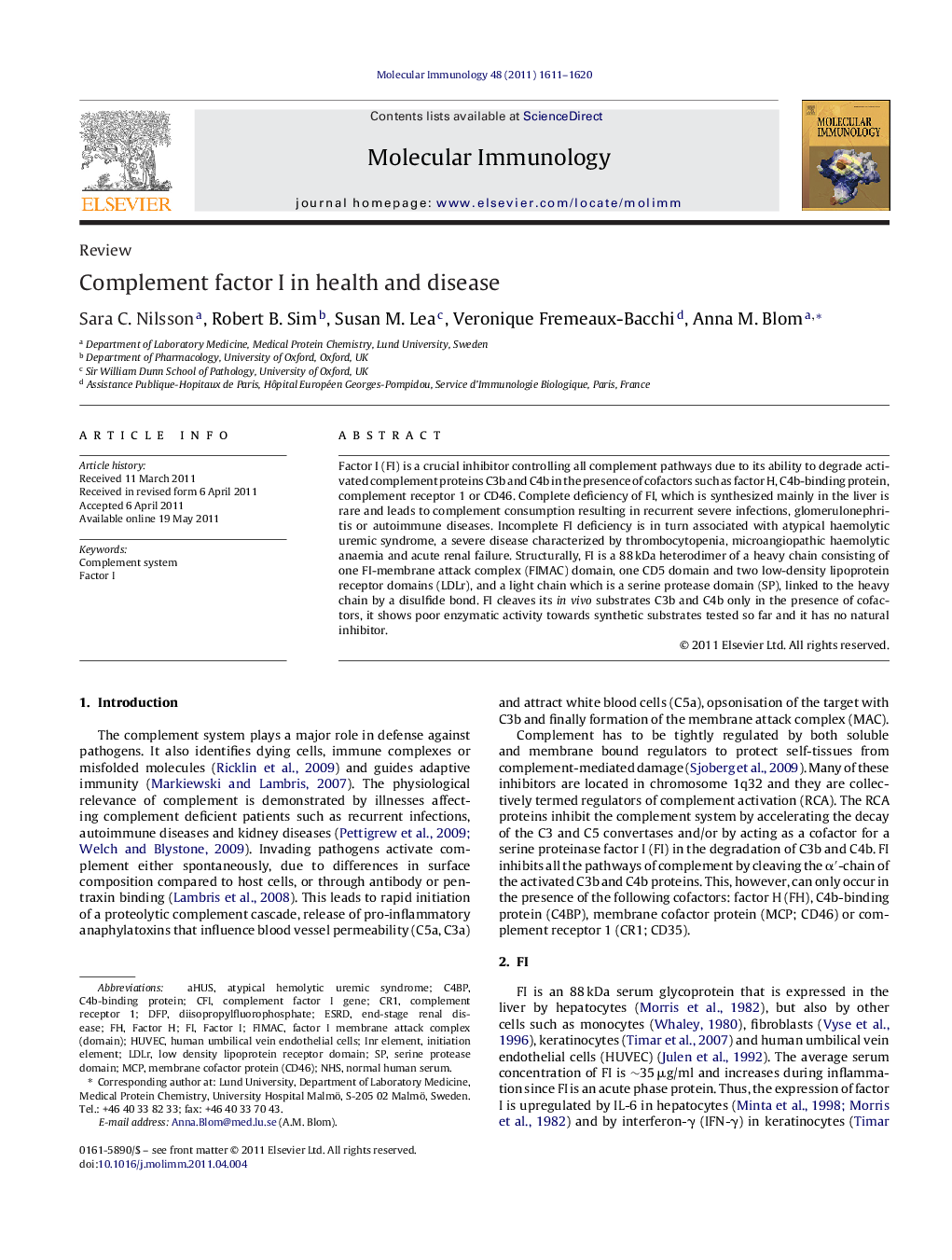| Article ID | Journal | Published Year | Pages | File Type |
|---|---|---|---|---|
| 2831438 | Molecular Immunology | 2011 | 10 Pages |
Factor I (FI) is a crucial inhibitor controlling all complement pathways due to its ability to degrade activated complement proteins C3b and C4b in the presence of cofactors such as factor H, C4b-binding protein, complement receptor 1 or CD46. Complete deficiency of FI, which is synthesized mainly in the liver is rare and leads to complement consumption resulting in recurrent severe infections, glomerulonephritis or autoimmune diseases. Incomplete FI deficiency is in turn associated with atypical haemolytic uremic syndrome, a severe disease characterized by thrombocytopenia, microangiopathic haemolytic anaemia and acute renal failure. Structurally, FI is a 88 kDa heterodimer of a heavy chain consisting of one FI-membrane attack complex (FIMAC) domain, one CD5 domain and two low-density lipoprotein receptor domains (LDLr), and a light chain which is a serine protease domain (SP), linked to the heavy chain by a disulfide bond. FI cleaves its in vivo substrates C3b and C4b only in the presence of cofactors, it shows poor enzymatic activity towards synthetic substrates tested so far and it has no natural inhibitor.
► FI is a 88 kDa plasma protein composed of a heavy and a light chain linked by a disulfide bond. ► FI inhibits all complement pathways via degrading activated complement proteins C3b and C4b in the presence of cofactors. ► Complete deficiency of FI is rare and leads to complement consumption resulting in recurrent severe infections. ► Incomplete FI deficiency is associated with atypical haemolytic uremic syndrome with thrombocytopenia, microangiopathic haemolytic anaemia and acute renal failure.
